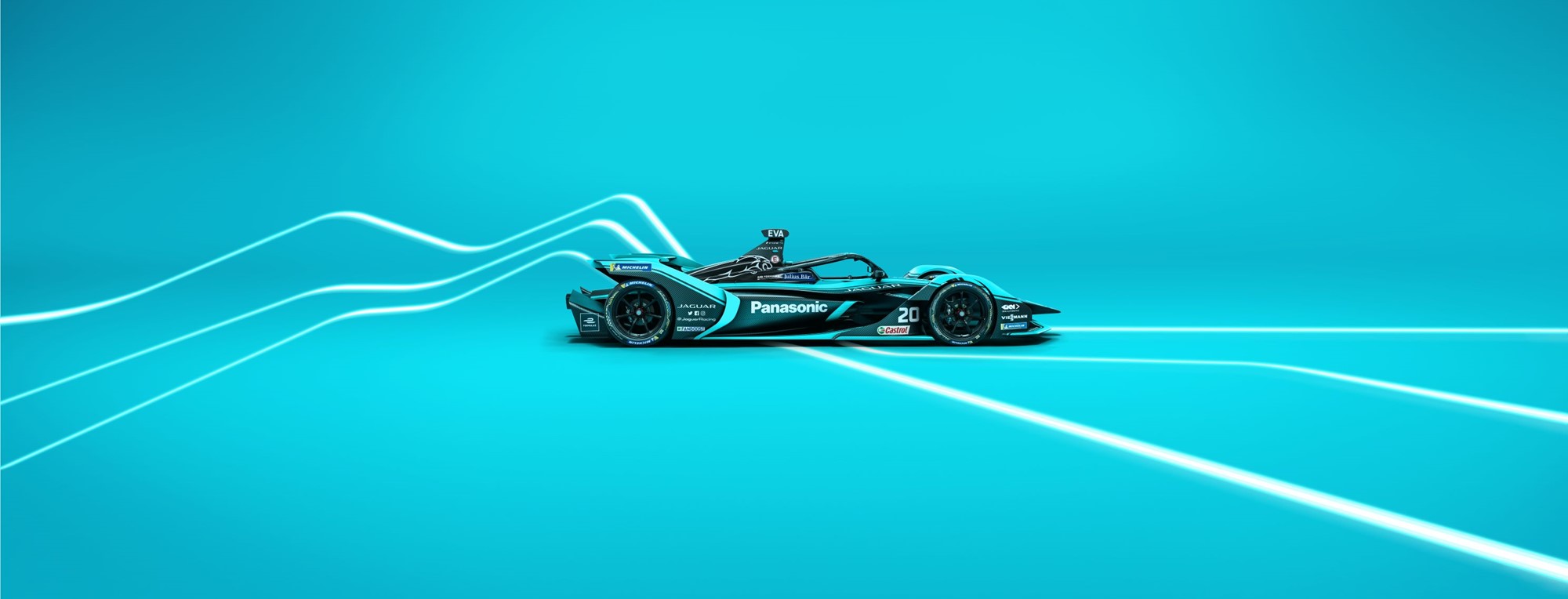

Panasonic Jaguar Racing
THE CAR

I-TYPE Battery
The Generation 2 lithium ion battery (385kg, 52kW) is housed in a carbon fibre safety cell. The battery's usable energy is the equivalent of fully charging 5,000 mobile phones. The Rechargeable Energy Storage System (RESS) is charged prior to the race and the regeneration braking during the race coverts energy back into the battery.

I-TYPE Powertrain
The Panasonic Jaguar Racing Motor Generator Unit (MGU) is all new for season 6 and is based on the team's learnings from the first season with the Gen 2 car. During development and testing the team focused on making the MGU lighter and more efficient to further improve the overall performance of the I-TYPE.

I-TYPE Inverter
The bespoke Silicone Carbide module I-TYPE inverter is developed by Panasonic Jaguar Racing. The inverter takes the direct current (DC) stored in the battery pack and turns it into the alternating current (AC) that feeds the motor and gives us the power to use.

I-TYPE Architecture
The new, extreme look isn't purely for aesthetics. The I-TYPE 4 has been specifically designed to increase the down force, courtesy of its large diffuser to offer superior grip even when closely following another car. Another prominent feature is the new FIA Halo head protection device, with its innovative LED light strip. When the lighting on the Halo glows blue, the car and driver are in Attack Mode. The Halo glows magenta when the driver has activated FanBoost, allowing fans to easily follow the strategy of their favourite team or driver.
THE TEAM
Mitch Evans
Mitch started karting at the age of 6 and won the New Zealand Grand Prix at 16. Mentored by former F1 racer Mark Webber, the young driver went on to win the 2012 GP3 title. Moving to GP2 in 2013 and at just 18 years of age, while still a rookie, Mitch became the youngest driver in GP2 history to stand on the podium after finishing third in Sepang, Malaysia. More success followed in 2015 when Mitch finished second at the 24 hours in Sepang, Malaysia.
Mitch made his ABB FIA Formula E debut with Panasonic Jaguar Racing in 2016 when the British team returned to racing. In his second season with the team, Mitch, widely seen as one of the quickest drivers on the grid, secured a series of firsts for Panasonic Jaguar Racing including a super pole, a pole position and a podium finish.
In 2019 his hard work paid off with his first Formula E victory in Rome. This was followed up by two further podiums in Bern and New York which led to a top five finish in the driver standings.
Sam Bird
Bird first appeared on the karting scene in 2002 aged 15. Following a successful two-year stint racing karts competitively in the UK and Europe, the British driver won a scholarship to race in the inaugural season of Formula BMW with Carlin Motorsport, ending the year with three wins as one of the top rookie drivers.
Bird remained in Formula BMW for a second season and eventually finishing as championship runner-up. Joining forces with Mercedes F1 for the Young Driver Test in Abu Dhabi, the Brit was named as their Reserve Driver for the 2011 season, helping the team with testing throughout the 2012 and 2013 seasons.
Joining the ABB FIA Formula E Championship for its inaugural year in 2014, Bird was signed to Virgin Racing. Having driven for the team in every Formula E race to date, the British driver secured his best overall finish of third in the 2017/18 season, after challenging for the drivers' title against DS Techeetah's Jean-Eric Vergne and Audi Sport Abt Schaeffler's Lucas di Grassi.
.
There may only be two people behind the wheel on race day, but there’s an army of engineers, mechanics and analysts, all working behind the scenes and around-the-clock to ensure optimum performance is achieved. The most notable is James Barclay - the team director, Craig Wilson - the race director and Nick Rogers - the executive director of product engineering.
THE CHAMPIONSHIP

Follow the Race
Check out the previous and upcoming races via the link below, plus see how the team is doing in the table.

FanBoost
All Formula E teams run on the same chassis and battery unit to ensure a level playing field. However, one advantage drivers can acquire comes from FanBoost. The five drivers with the most FanBoost votes are awarded a significant burst of power, which they can deploy in 5 second windows during the second half of the race. Fans can vote up to four times a day during the 6 days prior to, and up to 6 minutes into, each race.